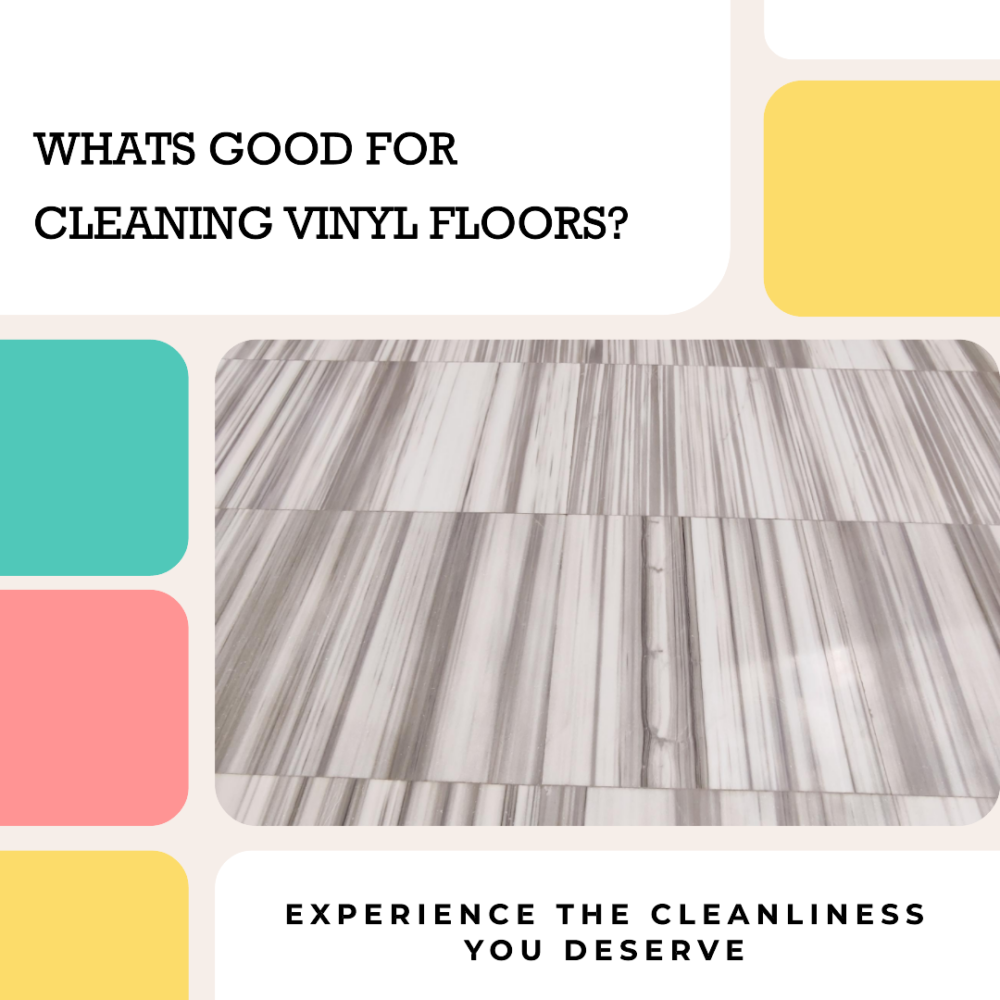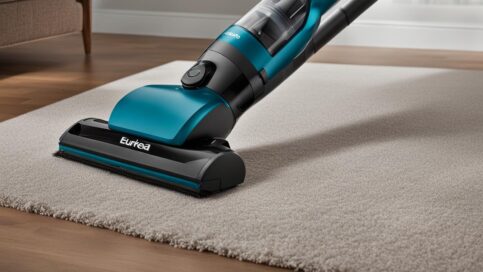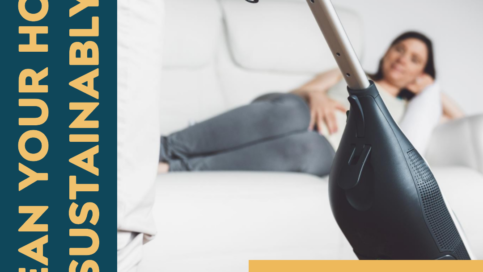Whats Good For Cleaning Vinyl Floors.
The importance of cleaning and maintaining vinyl floors for their longevity and overall appearance.
Essential cleaning supplies and the significance of using pH-neutral cleaners to avoid damage.
Step-by-step instructions for effectively cleaning vinyl floors, removing stains, and proper maintenance tips.
Vinyl floors are a popular choice for many homeowners due to their durability, affordability, and easy maintenance. But whats good for cleaning vinyl floors? In this article, we will explore the importance of cleaning vinyl floors, the necessary cleaning supplies, effective cleaning solutions, proper techniques for mopping, and tips for regular maintenance and care.
Benefits of maintaining clean vinyl floors
Keeping your vinyl floors clean offers several benefits beyond just aesthetics. Firstly, regular cleaning helps to remove dirt, dust, and allergens that can accumulate on the surface. This is particularly important for individuals with allergies or respiratory issues, as a clean floor can contribute to a healthier indoor environment.
Secondly, maintaining clean vinyl floors can prevent the buildup of grime and stains that can be difficult to remove if left unattended. By addressing spills and stains promptly, you can avoid potential long-term damage to the vinyl surface.
Clean vinyl floors significantly enhance the overall appearance of any space. Whether it’s in your kitchen, bathroom, or living room, a clean floor creates a sense of freshness and cleanliness. It can make the room feel brighter and more inviting, contributing to a positive atmosphere in your home.
Why is cleaning vinyl floors important?
Neglecting the regular cleaning and maintenance of vinyl floors can lead to various issues. One of the most common problems is the accumulation of dirt and debris, which can scratch the surface of the vinyl. Over time, these scratches can become more visible and detract from the overall appearance of the floor.
Also, spills and stains that are not promptly cleaned can seep into the vinyl, causing discoloration and even permanent damage. This can be particularly problematic in high-traffic areas or places prone to spills, such as kitchens or dining areas.
How regular cleaning extends the lifespan of vinyl floors
Regular cleaning is essential for extending the lifespan of your vinyl floors. By removing dirt, dust, and other particles that can cause abrasion, you can prevent premature wear and tear. Moreover, by addressing spills and stains promptly, you can prevent them from penetrating the surface and causing long-lasting damage.
Proper cleaning and maintenance can also help preserve the protective layer of the vinyl. This layer acts as a barrier against scratches, stains, and UV damage. By keeping this layer intact through regular cleaning, you can ensure that your vinyl floors remain in good condition for years to come.
Gather necessary cleaning supplies
When it comes to cleaning vinyl floors, having the right supplies is crucial. Here are the essential cleaning supplies you’ll need:
Broom or vacuum cleaner: Use a broom with soft bristles or a vacuum cleaner with a hard floor setting to remove loose dirt, dust, and debris from the floor surface.
Mop and bucket: Opt for a microfiber mop that is gentle on vinyl floors and effectively traps dirt and grime. Choose a bucket that is large enough to hold an adequate amount of cleaning solution and water.
pH-neutral cleaner: Look for a pH-neutral cleaner specifically formulated for vinyl floors. Avoid harsh chemicals or abrasive cleaners, as they can damage the vinyl surface.
Using pH-neutral cleaners is essential when cleaning vinyl floors. Vinyl is a sensitive material that can be easily damaged by harsh chemicals or acidic substances. Acidic cleaners, such as vinegar or citrus-based cleaners, can strip away the protective layer of the vinyl, making it more susceptible to scratches, stains, and discoloration.
On the other hand, pH-neutral cleaners are gentle yet effective at removing dirt and grime without causing any harm to the vinyl surface. They maintain the integrity of the protective layer while still providing a thorough clean. Always read the labels on cleaning products to ensure they are suitable for use on vinyl floors.
Understanding the characteristics of vinyl floors
Vinyl floors are made of several layers, each with its own purpose. The topmost layer is the wear layer, which provides protection against scratches, stains, and UV damage. The second layer is the printed or decorative layer, which gives the vinyl its desired appearance, such as wood or tile. Beneath these layers, there is a core layer that provides stability and durability. Finally, there is the backing layer that adds additional support and insulation.
Understanding the composition of vinyl floors is important when it comes to cleaning. The wear layer is the most delicate and susceptible to damage, so it’s essential to use gentle cleaning methods and avoid abrasive tools or harsh chemicals that can compromise its integrity.
Vinyl floors come in various types, including sheet vinyl, vinyl tiles, and luxury vinyl planks (LVP). Each type has its own cleaning requirements.
Sheet vinyl is a single, continuous piece of flooring that is relatively easy to clean. Regular sweeping or vacuuming, followed by mopping with a pH-neutral cleaner, is usually sufficient for sheet vinyl.
Vinyl tiles and LVP (Luxury Vinyl Planks), on the other hand, may have more crevices or seams where dirt and grime can accumulate. It’s important to pay extra attention to these areas during cleaning. Plus, some vinyl tiles or LVP may have a protective layer that requires special care. Always refer to the manufacturer’s recommendations for cleaning and maintenance specific to your type of vinyl flooring.
| Vinyl Floor Type | Cleaning Requirements |
|---|---|
| Sheet Vinyl | Regular sweeping or vacuuming, followed by mopping with a pH-neutral cleaner |
| Vinyl Tiles | Pay extra attention to crevices and seams where dirt and grime can accumulate. Follow manufacturer’s recommendations for cleaning and maintenance. |
| Luxury Vinyl Planks | Pay extra attention to crevices and seams where dirt and grime can accumulate. Follow manufacturer’s recommendations for cleaning and maintenance. Some may have a protective layer that requires special care. |
Preparing the vinyl floor for cleaning
Before you begin the actual cleaning process, it’s important to remove loose dirt and debris from the vinyl floor. This can be done by either sweeping or vacuuming.
If you choose to sweep, use a soft-bristle broom or a dust mop to gently collect the dirt and debris. Start from one end of the room and work your way towards the exit, ensuring that you cover the entire floor surface.
Alternatively, you can use a vacuum cleaner with a hard floor setting or a brush attachment designed for hard surfaces. This will effectively remove dirt and debris without scratching the vinyl. Be thorough and go over the entire floor, paying attention to corners and edges where dirt tends to accumulate.
If you notice any stubborn stains or spills on your vinyl floor, it’s important to address them before proceeding with general cleaning. This will prevent the stains from setting in or becoming more difficult to remove later on.
For most stains, a mild solution of warm water and a pH-neutral cleaner should be sufficient. Dampen a soft cloth or sponge with the cleaning solution and gently blot the stain. Avoid scrubbing vigorously, as this can damage the vinyl surface. Instead, let the cleaning solution sit on the stain for a few minutes to loosen it before gently wiping it away.
For tougher stains or spills, such as ink or grease, you may need to use specialized cleaning products or techniques. We will discuss specific stain removal methods in more detail later in the article.
Choosing effective cleaning solutions for vinyl floors
When it comes to regular maintenance of vinyl floors, using mild, pH-neutral cleaners is highly recommended. These cleaners are specifically formulated to be gentle on vinyl surfaces while still effectively removing dirt and grime.
One of the main benefits of using mild, pH-neutral cleaners is that they do not strip away the protective layer of the vinyl. This layer is essential for preserving the appearance and durability of the floor. Harsh chemicals or acidic cleaners can compromise this layer and make the vinyl more susceptible to damage.
Mild, pH-neutral cleaners also leave behind no residue or dulling film, ensuring that your vinyl floors maintain their natural shine and luster. They are safe for regular use and will not cause any discoloration or harm to the vinyl surface.
While mild, pH-neutral cleaners are suitable for regular maintenance, there may be instances where you need alternative cleaning solutions for specific issues.
For example, scuff marks can sometimes appear on vinyl floors, especially in high-traffic areas. To remove scuff marks, you can try using a pencil eraser or a damp melamine foam sponge. Gently rub the scuff marks until they disappear, being careful not to rub too hard and damage the vinyl.
For deep cleaning or removing stubborn stains, you can consider using a specialized vinyl floor cleaner. These cleaners are designed to tackle more challenging dirt and stains without harming the vinyl surface. Follow the manufacturer’s instructions for dilution ratios and application methods.
Remember to always test any cleaning solution or method in an inconspicuous area of the floor before applying it to the entire surface. This will ensure that the cleaner is safe and effective for your particular vinyl flooring.
Proper techniques for mopping vinyl floors
When mopping vinyl floors, it’s important to dilute the cleaning solution according to the manufacturer’s instructions. Using the correct ratio ensures that the cleaner is effective without leaving behind any residue or causing any damage.
Typically, the manufacturer will provide guidelines on the label regarding the amount of cleaner to add to a specific amount of water. Follow these instructions carefully to achieve the best results. Using too much cleaner can leave a sticky residue, while using too little may not provide sufficient cleaning power.
Warm water is the ideal temperature for mopping vinyl floors. It helps to loosen dirt and grime without causing any damage to the vinyl surface. Avoid using hot water, as it can potentially warp or distort the vinyl.
To create the cleaning solution, mix the appropriate amount of pH-neutral cleaner with warm water in a bucket. Stir the solution gently to ensure it is well combined. The exact ratio will depend on the specific cleaner you are using, so refer to the manufacturer’s instructions.
When mopping vinyl floors, it’s crucial to avoid oversaturating the floor with water. Vinyl is not completely waterproof, and excessive moisture can seep into the seams or edges of the vinyl, causing damage such as warping or lifting.
To prevent water damage, wring out the mop thoroughly before mopping the floor. The mop should be damp, not dripping wet. Start from one end of the room and work your way towards the exit, making sure to cover the entire floor surface.
If you notice any excess water pooling on the floor, use a clean, dry cloth or towel to absorb it immediately. Pay extra attention to areas around sinks, toilets, or bathtubs where water is more likely to accumulate.
Addressing specific stains and spills on vinyl floors
Vinyl floors are susceptible to various types of stains, but with the right approach, most stains can be effectively removed. Here are some step-by-step instructions for removing different types of stains:
Ink Stains:
– Immediately blot the ink stain with a clean cloth or paper towel to remove any excess ink.
– Dampen a soft cloth or sponge with rubbing alcohol or a specialized ink stain remover.
– Gently blot the stain, being careful not to spread it further.
– Continue blotting until the stain is completely lifted.
– Rinse the area with clean water and dry thoroughly.
Grease Stains:
– Scrape off any excess grease with a plastic scraper or a dull knife.
– Dampen a clean cloth or sponge with warm water and a few drops of dish soap.
– Gently scrub the grease stain, working from the outer edges towards the center.
– Rinse the area with clean water and dry thoroughly.
Wine Stains:
– Blot the wine stain immediately with a clean cloth or paper towel to absorb as much liquid as possible.
– Mix a solution of warm water and a few drops of mild dish soap.
– Dampen a clean cloth or sponge with the soapy solution and gently blot the stain.
– Continue blotting until the stain is no longer visible.
– Rinse the area with clean water and dry thoroughly.
Remember to always blot stains gently rather than scrubbing vigorously. Scrubbing can spread the stain or damage the vinyl surface.
For general stains, a mild solution of warm water and a pH-neutral cleaner should suffice. However, certain stains may require specialized cleaning methods or products.
For tough stains such as ink, a solution of rubbing alcohol or a specialized ink stain remover can be effective. These products are designed to break down and lift ink stains without causing harm to the vinyl surface.
Grease stains can be stubborn, but warm water and a few drops of dish soap can often do the trick. Dish soap helps to cut through the grease and lift it from the vinyl. Avoid using harsh chemicals or solvents, as they can damage the vinyl.
For wine stains, a solution of warm water and mild dish soap is usually sufficient. If the stain persists, you can try using a specialized vinyl floor cleaner or a mixture of warm water and white vinegar. Vinegar is mildly acidic and can help break down the stain.
Always test any cleaning method or product in an inconspicuous area first to ensure it does not cause any discoloration or damage to the vinyl. Follow the manufacturer’s instructions for specialized stain removers or vinyl floor cleaners.
Personal Story: The Benefits of Regular Cleaning
Amanda’s Story: How Regular Cleaning Saved Her Vinyl Floors
Amanda, a busy working professional, recently moved into a new apartment with beautiful vinyl floors. Excited about her new space, she quickly realized the importance of regular cleaning to maintain the pristine condition of her floors.
Within a few months, Amanda noticed her vinyl floors starting to lose their luster. They appeared dull and had accumulated noticeable dirt and grime. Concerned about the damage, she decided to take immediate action.
Following the advice of a friend, Amanda diligently started to clean her vinyl floors on a regular basis. She swept daily, ensuring that loose dirt and debris were promptly removed. She also invested in a quality pH-neutral cleaner specifically formulated for vinyl floors.
To her delight, Amanda soon discovered the transformative power of regular cleaning. Not only did her floors regain their shine, but they also looked as good as new. By preventing the build-up of dirt and grime, Amanda was able to extend the lifespan of her vinyl floors and protect her investment.
Now, Amanda happily shares her story with friends and family, emphasizing the importance of regular cleaning for vinyl floors. She believes that her commitment to maintaining cleanliness has made all the difference in preserving the beauty and longevity of her vinyl floors.
By following the expert tips and recommendations outlined in this article, you too can effortlessly clean and maintain your vinyl floors, ensuring they remain a source of pride and beauty in your home or workspace.
Rinsing and drying the vinyl floor
After mopping your vinyl floor with the cleaning solution, it’s important to rinse the floor with clean water. This step helps to remove any residual cleaning solution that may be left on the surface.
Fill a clean bucket with warm water and use a clean mop or cloth to dampen it. Go over the entire floor, ensuring that you rinse off any remaining cleaning solution. This will help prevent any buildup or residue that can dull the appearance of the vinyl.
Thoroughly drying the vinyl floor is essential to prevent slips, falls, and water damage. Vinyl floors can be slippery when wet, so it’s important to remove any excess moisture.
Use a clean, dry mop or cloth to absorb as much water as possible from the floor. Pay extra attention to areas where water may pool, such as corners or edges. If necessary, you can also use a fan or open windows to help speed up the drying process.
Ensure that the floor is completely dry before allowing foot traffic or placing furniture back on it. This will prevent any accidents and help maintain the integrity of the vinyl surface.
Tips for regular maintenance and care of vinyl floors
To keep your vinyl floors looking their best, here are some additional tips for regular maintenance and care:
Place doormats or rugs at entryways to trap dirt and prevent it from being tracked onto the floor.
Use furniture pads or coasters to prevent scratches and indentations from heavy furniture.
Avoid dragging or sliding heavy objects across the floor, as this can cause damage.
Clean up spills and stains immediately to prevent them from setting in.
Avoid using abrasive tools or harsh chemicals that can damage the vinyl surface.
Regularly sweep or vacuum the floor to remove loose dirt and debris.
Consider using a floor polish or wax specifically designed for vinyl floors to enhance their shine and protect the surface.
By following these tips and regularly maintaining your vinyl floors, you can ensure that they remain beautiful and durable for years to come.
In conclusion, cleaning and maintaining vinyl floors is essential for their longevity and appearance. Using the right cleaning supplies, techniques, and products can help you effortlessly clean your vinyl floors and keep them looking their best. Whether it’s regular maintenance or addressing specific stains, following these expert tips will ensure that your vinyl floors remain in pristine condition.








